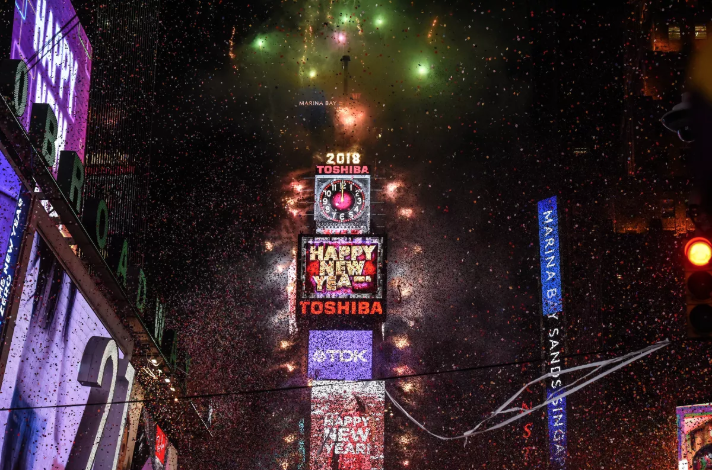New Years Eve Around the World
January 6, 2020
When it comes to New Year’s Eve, one would usually think of the Times Square Ball Drop. In the United States, the majority of people either watch a livestream of the ball drop countdown or attend the event in New York City. This celebration is a tradition that has been occurring annually since 1907. New Year’s Eve in America is generally viewed as a fresh start for everyone, and a majority of people create New Year’s Resolutions to kick off the new year.
New Year’s Eve in the United States and other countries has not always been on December 31st. The Ancient Roman Calendar used to follow the lunar cycle, where the New Year began in March. This changed when Sosigenes, an astronomer, advised Julius Caesar to follow the solar year instead. From 46 B.C. on, the New Year began in January. This is classified as the Gregorian New Year. The most commonly known include the Hindu New Year, where groups celebrate New Year’s Day during the first day of the first Hindu month, Chaitra, which occurs in April in 2019.
Another popular New Year’s Eve celebration is the Nowruz, Persian New Year, which is celebrated from March 19th to 21st; relative to the time zone of where it is celebrated. According to the University of Michigan, the Persian New Year is determined by the moment at which the sun “crosses the celestial equator and equalizes night and day is calculated exactly every year, and families gather together to observe the rituals.” Junior Ella Eslamian said, “Persian New Year is very different from American New Year. We celebrate Persian New Year for 13 days. On the 13th day, families meet at a local park and have a huge picnic, to celebrate nature.” This clearly demonstrates the drastic difference between New Year’s around the globe.
The Chinese New Year, the Lunar New Year, and the Spring Festival all relate to each other, but they are not the same thing. Chinese New Year is based on the specific Chinese Lunar Calendar, whereas the lunar calendar is a calendar based on complete cycles of phases of the Moon. The Chinese New Year is the starting point of the new lunar year. Many Asian families celebrate Chinese New Year, including Freshman Rebecca Liu. “Every year our grandparents give us a red envelope called HongBao. It is a tradition held throughout the Chinese culture that I look forward to,” Liu said.
According to Chinese Highlights, the Chinese New Year’s Eve is celebrated by first decorating homes, followed by a dinner with the entire family. After dinner, HongBao, red envelopes that contain money, are gifted, or family members exchange gifts of their choice. The Spring Festival is a celebration where red covers the city. The color red symbolizes happiness, luck, and joy, and is the main color of the festival. The decorating of the town is usually completed a month prior, while home decorations are the day of New Year’s Eve.
Throughout the world, New Year’s Eve is celebrated with customs, days, and traditions specific to different cultures. All of the cultures keep the same vibrant, exciting energy during the celebration.

